DELAMERE FOREST GOLF CLUB
I played the course in April of 2006 with the club champion and Mark Rowlinson.I owe him gratitude as most of the pictures are his. The following is taken from their web site and gives a brief history of the club. While the club calls the ground heathland I didnít find much heather. The ground was firm, even in April. They tell me that in the summer the course get very brown and firm.
The welcome is second to none and the pro (who has since retired) is as fine a gentleman as I have met.
The following is taken from their website.
The club was founded in 1910, reputedly in a hunting field, and the early list of members reads like an extract from the Cheshire Hunt register. It was the venue for the first Cheshire County Championship in 1921, an event which has been held at the Club on another eight occasions most recently in 2004 and to be held again in 2010. In 1967 Delamere Forest was one of the two qualifying courses for the Open Championship when it was held at Hoylake, the home of the Royal Liverpool Golf Club. At that time, Maurice Bembridge posted the Professional Course Record of 63 which exists to this day. Despite the word 'Forest' in its title, Delamere is a natural heath-land course. Certainly, trees are part of the strategy on several holes, but, in general, Delamere Forest provides a glorious backdrop to the panoramic views from the higher parts of the course. The course was designed by W H Fowler (who also designed the Old Course at Walton Heath) who made the most of the vigorously undulating land that nature provided. Fowler had no qualms about asking the golfer to undertake a number of blind drives, carrying some considerable distances and enjoying the healthy exercise of hill climbing.
Overall, there is much variety in hole lengths and every kind of shot will be called for, but the opening five holes really stretch the average player. There are many holes with character, for example the fifth, with a long uphill carry to the green with a pond to the left and below the green and the need to hold the shot up to that side. The sixth is a short hole from an elevated tee to a small green set at an angle to the tee with enticing views over the pond below the green to the left, with woods and fields in all directions. The eighth requires a long straight tee shot to find a narrow fairway to give a long iron shot to a steeply sloping green.
Since the greens are not watered unless it is absolutely necessary, the course presents a tactical challenge in the summer which requires the tee shots to be positioned to give the correct angle of approach to the greens if good scores are to be achieved.
This is the approach shot to the second green. It is a stout par four of 443 yards straight uphill.
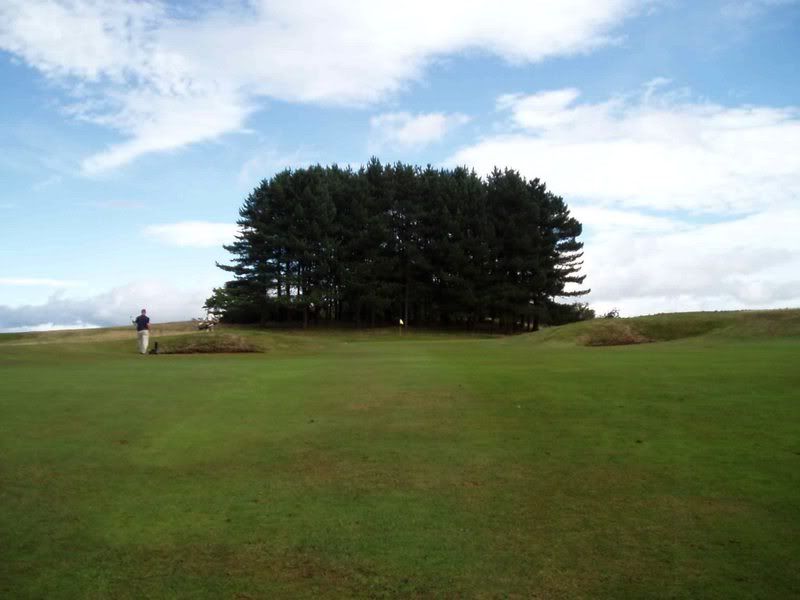
This is the view from the third tee a 410 yard par four.
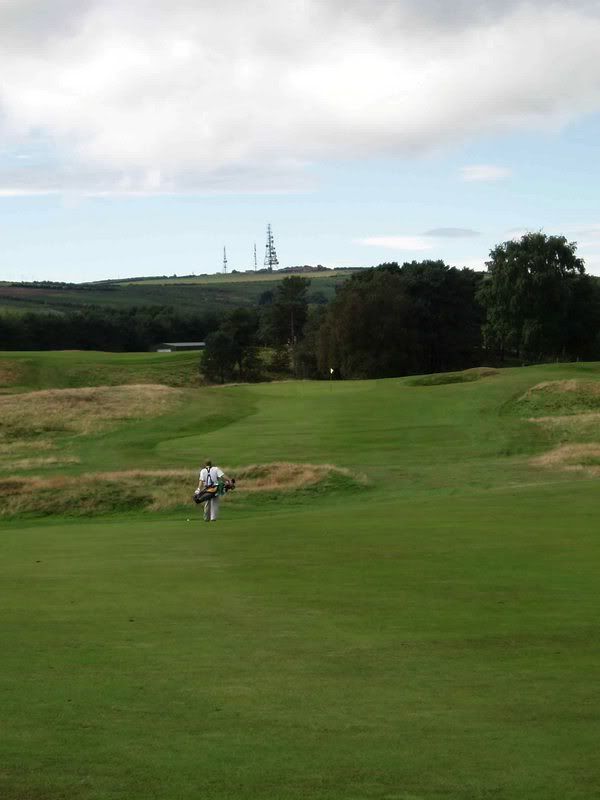
The fourth is a 212 yard par 3.

View of the green. (I ran up and dropped a ball near the pin)

This is the par three sixth. It is short but devilish par 3 of 150 yards.
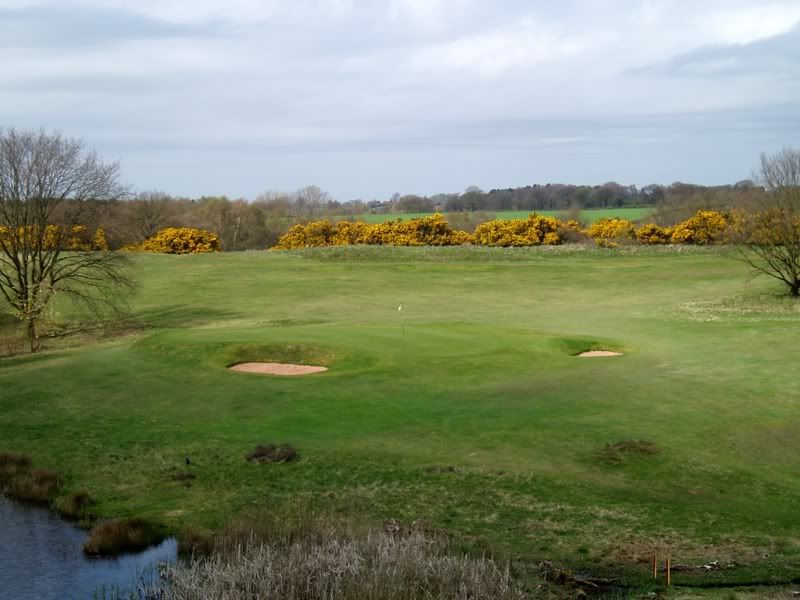
Bunker on the 8th green.
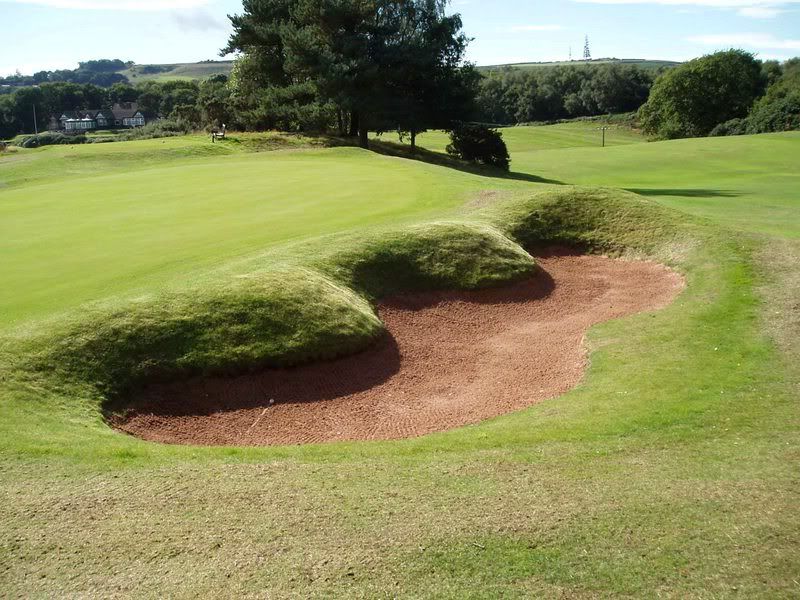
View from the 9th tee. It is 331 yard par four down to a valley and then up to the green Many choices off the tee. I hit driver, my playing partner (club champion) hit an iron to stay on the same elevation as the green. I hit it in the valley. Both of us made par. I had the more difficult shot.
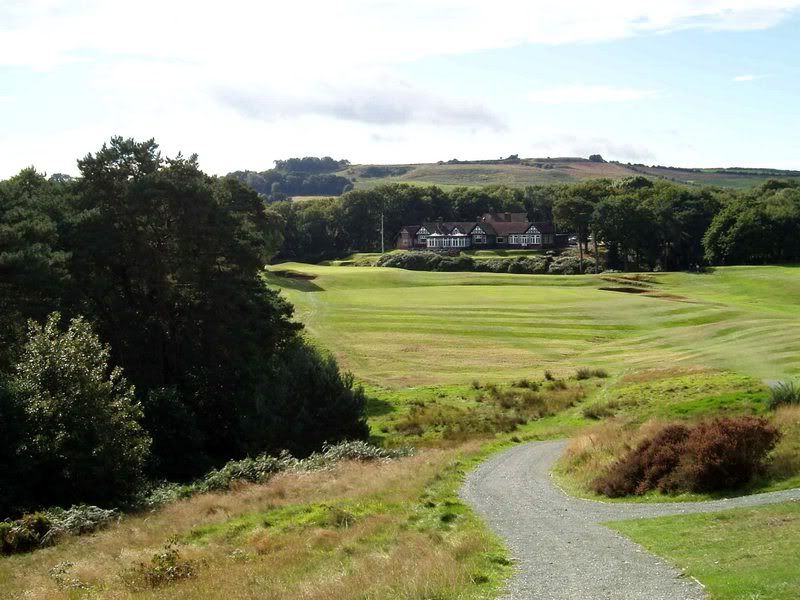
Shot to the 9th green from the valley.
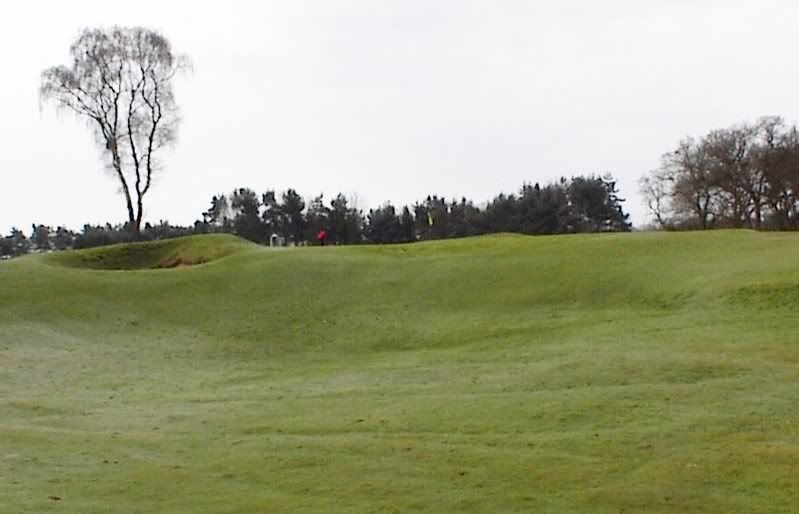
View of the 9th green from the right of the green.

Delamere is wonderful place to play. The course is interesting, demanding, with great shots into the greens. You can fly it there or bump and run it. In the summer you have to play along the ground as much as you can because it is to firm to hit it to the green. Some places it will be difficult because some of the greens are raised.
I'll post the back nine in a few days